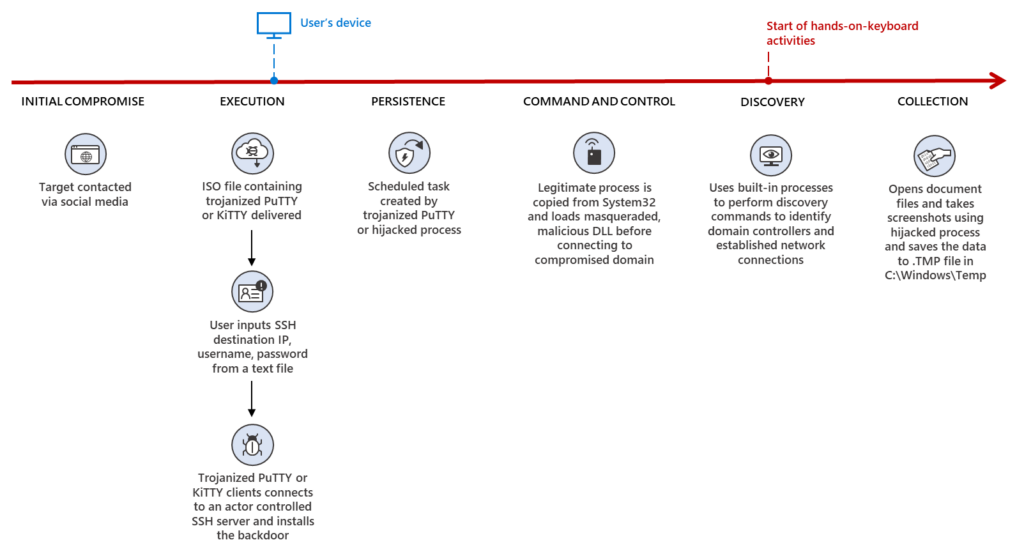Throughout Cybersecurity Awareness Month, Microsoft has highlighted the importance of cybersecurity and provided resources to help people and organizations stay safe. It’s great to have this month as a reminder, and even better if that awareness becomes a year-round endeavor. Education is really the key. With the increase of sophisticated cyber attacks, we know that the combination of security tools and educated users is our best line of defense. After all, security teams are increasingly stretched to protect today’s sprawling digital ecosystem. And it’s not going to get any easier as the talent shortage in our industry grows. Current estimates predict that the global workforce will need to train and hire roughly 3.4 million cybersecurity professionals to effectively defend organizations’ critical assets.1
The great news is we have an opportunity to not only grow our community of defenders but strengthen it by breaking down barriers, being more inclusive, and making careers in cybersecurity more accessible to all.
Strengthening security through diverse viewpoints
To meet the current and future challenges, the defender community needs to be as diverse as the attackers we face. Unfortunately, while progress is being made, many groups are still underrepresented in the field of cybersecurity. Less than 25 percent of the cyber workforce are women and, in 2021, only 9 percent of cybersecurity workers were Black and only 4 percent Hispanic.2 Not only is the current underrepresentation among these groups a wildly missed opportunity, but it also means we don’t have the benefit of diverse viewpoints as we try to address complex cybersecurity issues.
Fortunately, the seeds of change are here, and it’s up to all of us to nurture their growth. According to a study commissioned by Microsoft, 82 percent of American women believe there is an opportunity for them in the cybersecurity industry. And they’re right! Cybersecurity is an incredible career path, one that’s interesting and challenging, and where you can make a real difference in the world, every single day. Still, 71 percent of women feel that cybersecurity is “too complex” of a career, and that perception is something we simply must change. At Microsoft, we’re working hard to do just that. Aimee Reyes, who received a cybersecurity scholarship through Microsoft’s partnership with the Last Mile Education Fund, summed up her experience this way: “For anyone who thinks that cybersecurity is a male profession, I would say you’re going to see a lot of men. It doesn’t mean you can’t make your own table, make your own seat. It doesn’t mean that you don’t belong, because you do.”
I could not agree more!
Making cybersecurity training accessible to more students
In 2021, Microsoft launched its cybersecurity jobs campaign to help community colleges in the United States train the next generation of cyber defenders. The campaign aims to fill thousands of cybersecurity jobs by 2025 by providing free cybersecurity curricula to accredited higher education institutions, along with training for faculty and financial aid for low-income students.
Since its inception, more than 1,000 low-income community college students across 47 states have benefited from the Microsoft Cybersecurity Scholarship Program in partnership with the Last Mile Education Fund. This scholarship program has been very effective in reaching a talent pool that may not have had access to further education. According to a student named Justin: “Without this grant, there is no way I could have started this semester. I’ve already put my family through too much trying to make this happen to risk any chance of not finishing. Thank you for believing in me.” Because of feedback like this and strong results, Microsoft has expanded its cybersecurity jobs campaign to an additional 24 countries, all of which have a skills gap in their cybersecurity workforces, both in numbers and diversity.
Also, to help provide girls with real-world inspiration, we created Microsoft DigiGirlz, which offers female middle and high school students an early opportunity to learn about careers in technology, as well as connect with Microsoft employees and participate in hands-on technology workshops. And for students who want to showcase their skills, Microsoft has created the Imagine Cup, which allows entrants to access exclusive training, gain mentorship opportunities, compete to win great prizes, and collaborate on creating new technologies that make a difference.
I absolutely love that these programs help inspire and empower students. And I’m so excited that Microsoft is partnering with some amazing organizations to help empower educators, as well.
Providing educators with cybersecurity tools and curricula
Through the Microsoft Learn for Educators program, we’re also providing access to certification course materials for Security, Compliance, and Identity Fundamentals (SC-900), and Microsoft Azure Security Technologies (AZ-500). Additional support for faculty includes free practice exams, curriculum integration, and course-prep sessions led by Microsoft trainers. In addition, we’re expanding access to cybersecurity courses to educational institutions through LinkedIn Learning, and there are even more security skilling opportunities available through our Microsoft Learn platform.
Microsoft is also partnering with the National Cybersecurity Training & Education Center (NCyTE) to provide faculty with professional development opportunities as well as support colleges in attaining the Center of Academic Excellence in Cyber Defense (CAE-CD) designation. This support will provide a foundation for cybersecurity training at nearly 15 percent of community colleges across the United States. In a recent interview with Fortune magazine, Naria Santa Lucia, Senior Director of Digital Skills and Employability at Microsoft Philanthropies, explained our approach in simple terms: “Community colleges are so affordable, and they are everywhere. That system has a lot of women and lots of students of color. If we can really tap that infrastructure to start getting that message out, that’s a good start to diversifying the talent pipeline.”4
Still going strong, Microsoft Technology Education and Learning Support (TEALS) has been helping to build sustainable computer science education programs since 2009. TEALS helps teachers learn to teach computer science by pairing them with industry volunteers and proven curricula. Since the program began, more than 95,000 students have received computer science education. TEALS currently supports more than 500 high schools in the United States and British Columbia, Canada. In the past year, Microsoft has expanded the TEALS program course offerings to include cybersecurity at 37 schools.
Forging partnerships to foster new cyber defenders
Security is a team sport, and partnership is critical to our success as a defender community. Microsoft continues to partner with organizations that practice similar values and focus on diversity for cybersecurity education.
In the United States, only eight percent of information security analysts are African American.3 Microsoft is working to raise that number through its participation in the HBCU Cybersecurity Industry Collaboration Initiative Pilot.5 The initiative is designed to develop students for careers in cybersecurity and engineering through research collaborations, guest lecturers, and mentoring programs in collaboration with four historically Black colleges and universities (HBCUs): Hampton University, North Carolina A&T State University, Prairie View A&M University, and Virginia State University. Separately, the Blacks at Microsoft (BAM) program will also award 45 scholarships this year totaling USD182,500.
Microsoft has also partnered with Girl Security to “create career pathways for girls, women, and gender minorities to shape solutions to our most pressing security challenges” through mentorship programs, summer programming, trainings, and specific curriculum for high school students and early-in-career women. Microsoft also provides support for all women, allies, and advocates through partnership with WiCyS (Women in CyberSecurity). Through this partnership, Microsoft is helping to globally empower the recruitment, retention, and advancement of women with mentorship, professional development programs, scholarships, conferences, and job fairs. This includes partnering with WiCyS on the expansion of their student chapters in more than 20 countries.
The only thing missing is you
Microsoft is committed to making cybersecurity a viable career path for everyone. Creating a safer online world requires all of us—from every background—to bring to this mission the superpowers, the diverse skills, perspectives, and life experiences we each embody to defeat tomorrow’s cyberthreats. In the spirit of Cybersecurity Awareness Month, I hope you’ll share this post with friends, family, colleagues, or anyone with an interest in exploring a career in cybersecurity. There is so much opportunity to be a cyber defender.
Learn more
To learn about educational and professional cybersecurity opportunities at Microsoft, make sure to check out our Cybersecurity Awareness website for education resources.
To learn more about Microsoft Security solutions, visit our website. Bookmark the Security blog to keep up with our expert coverage on security matters. Also, follow us at @MSFTSecurity for the latest news and updates on cybersecurity.


